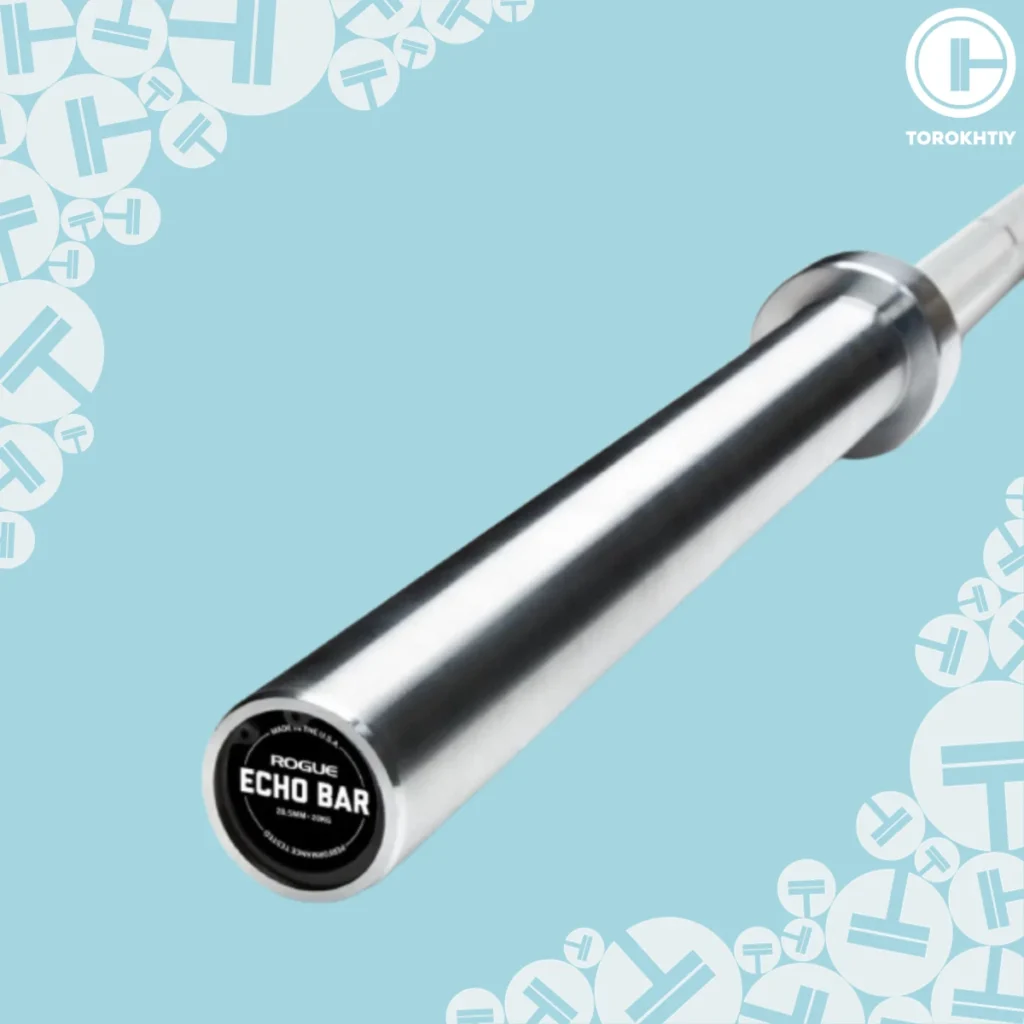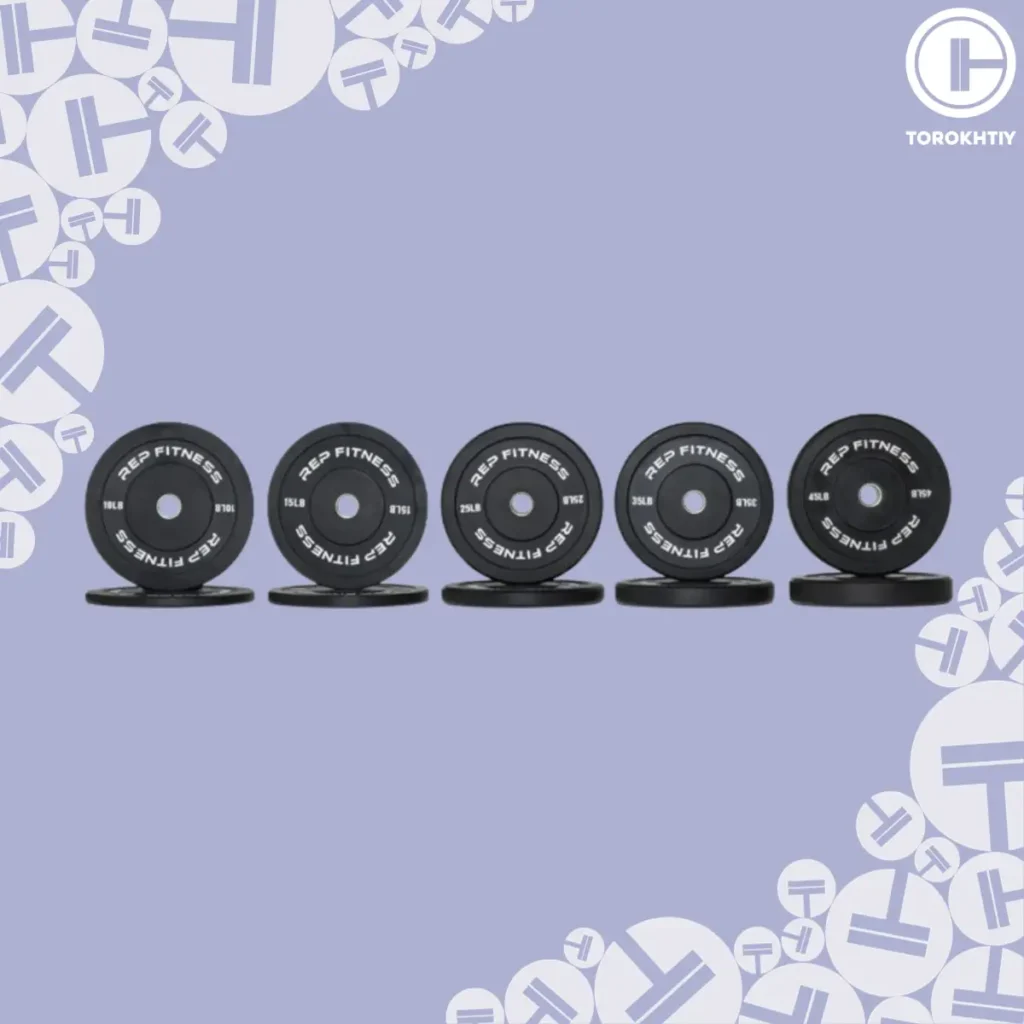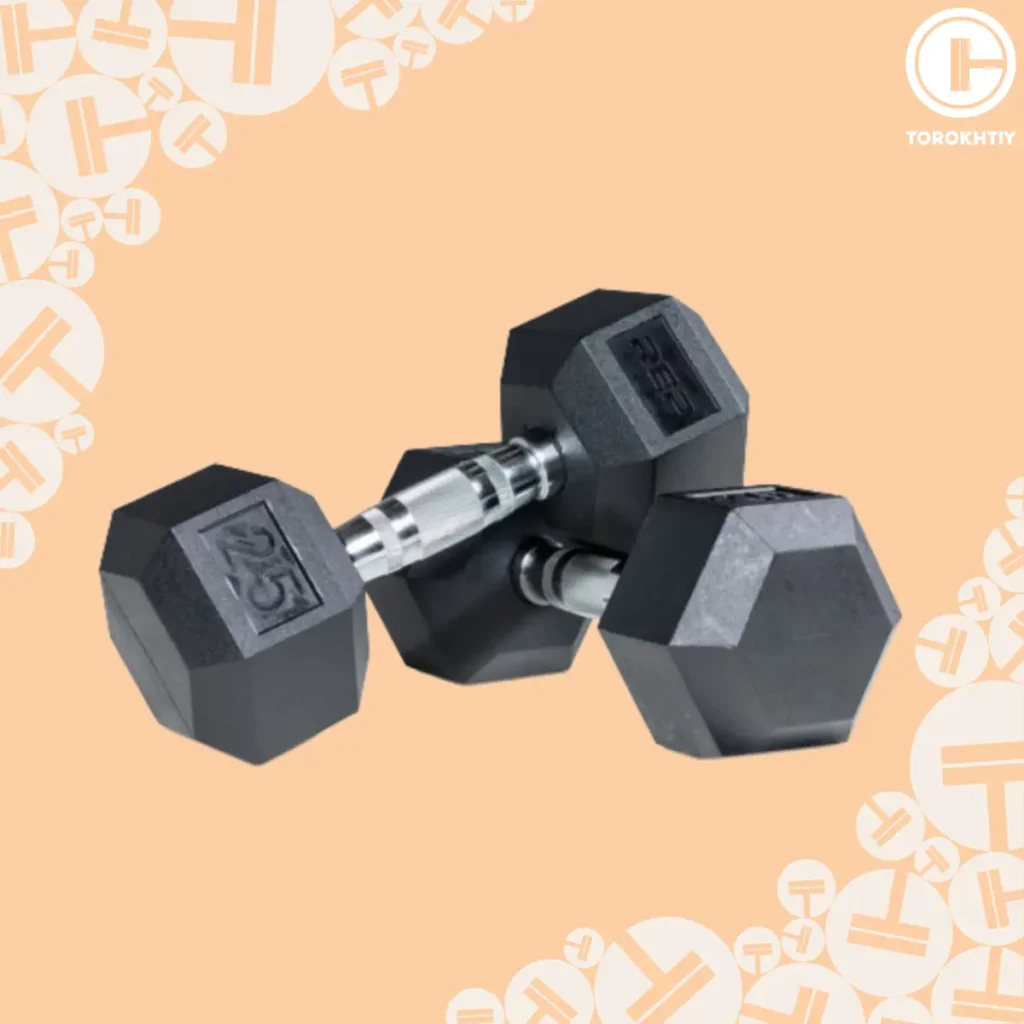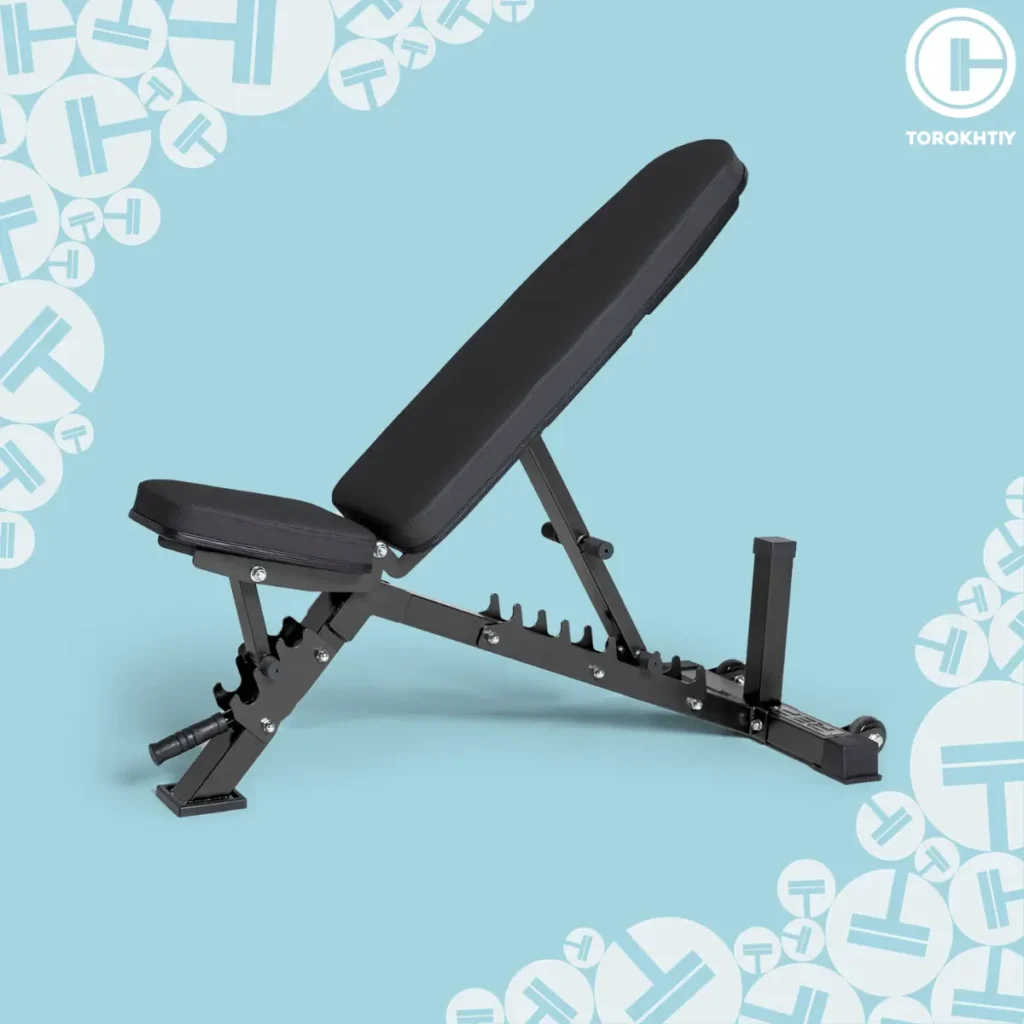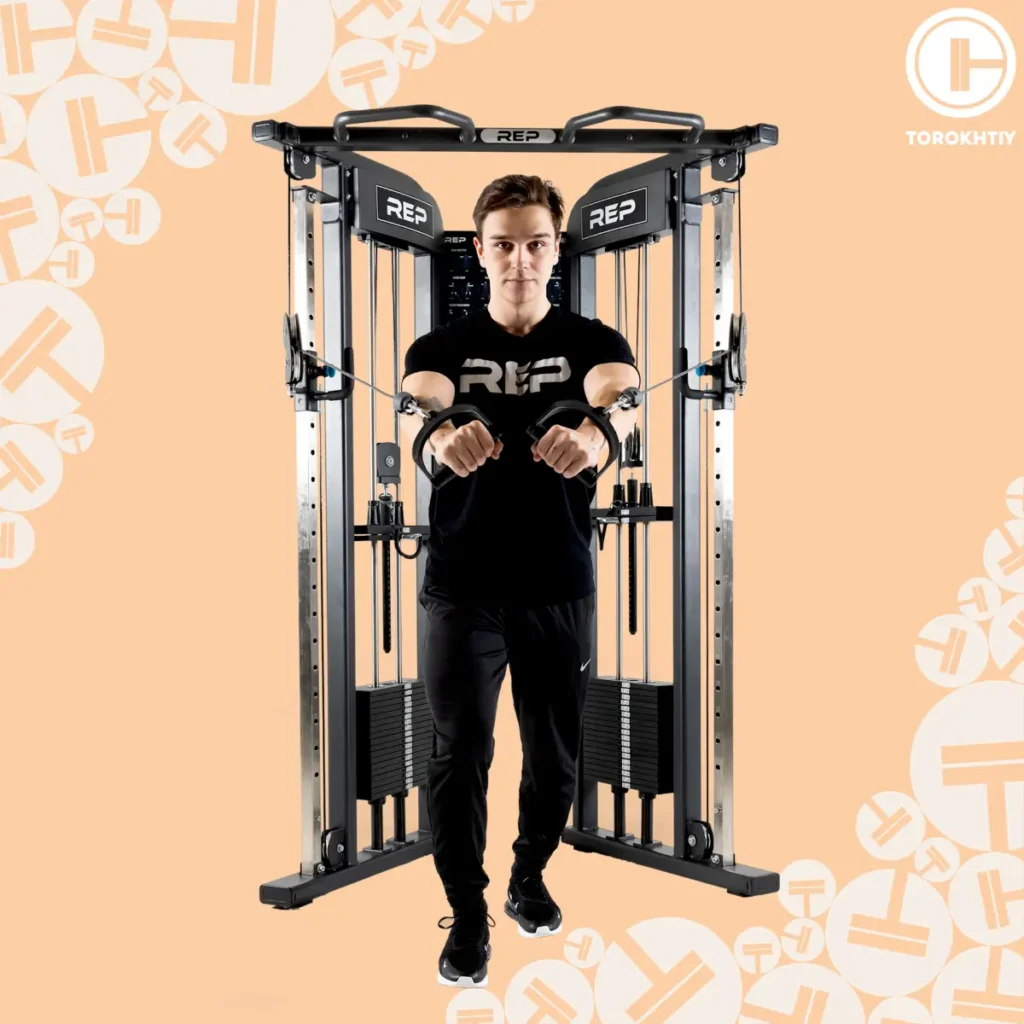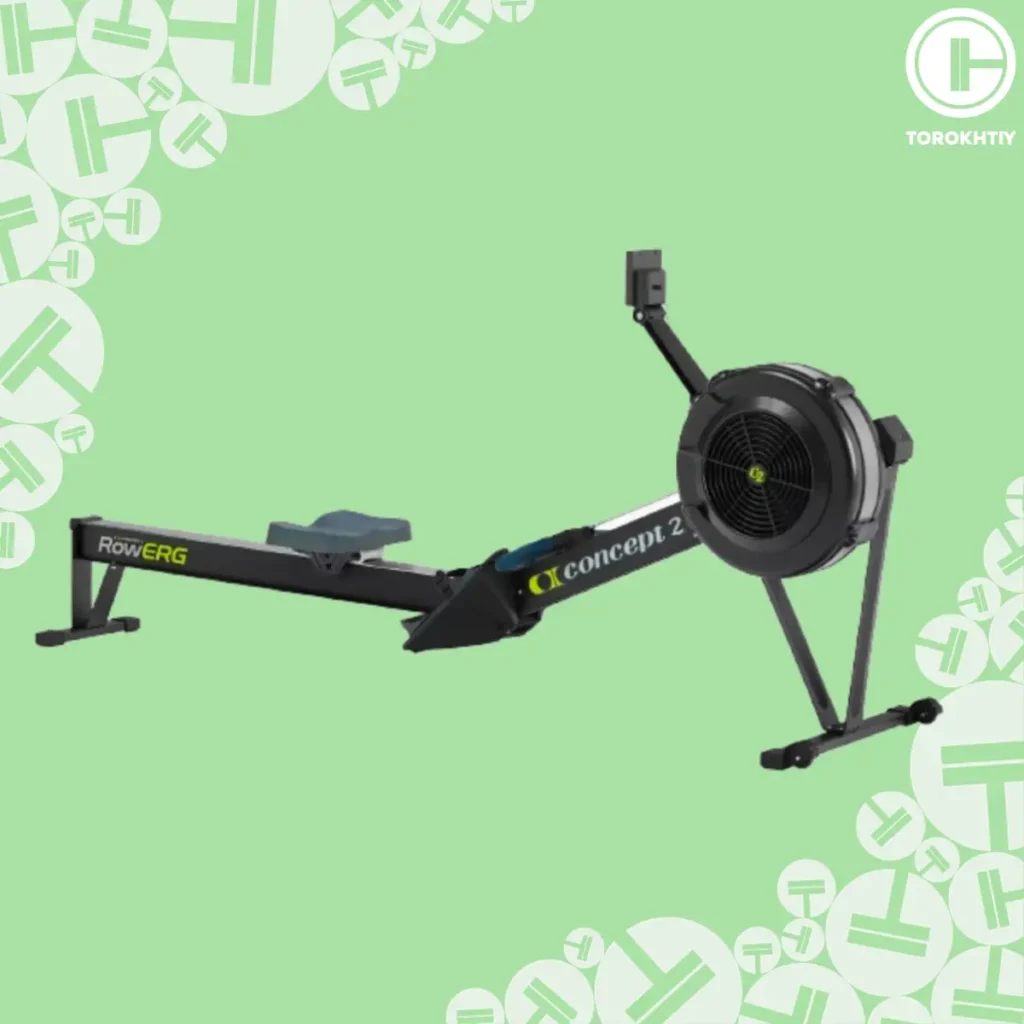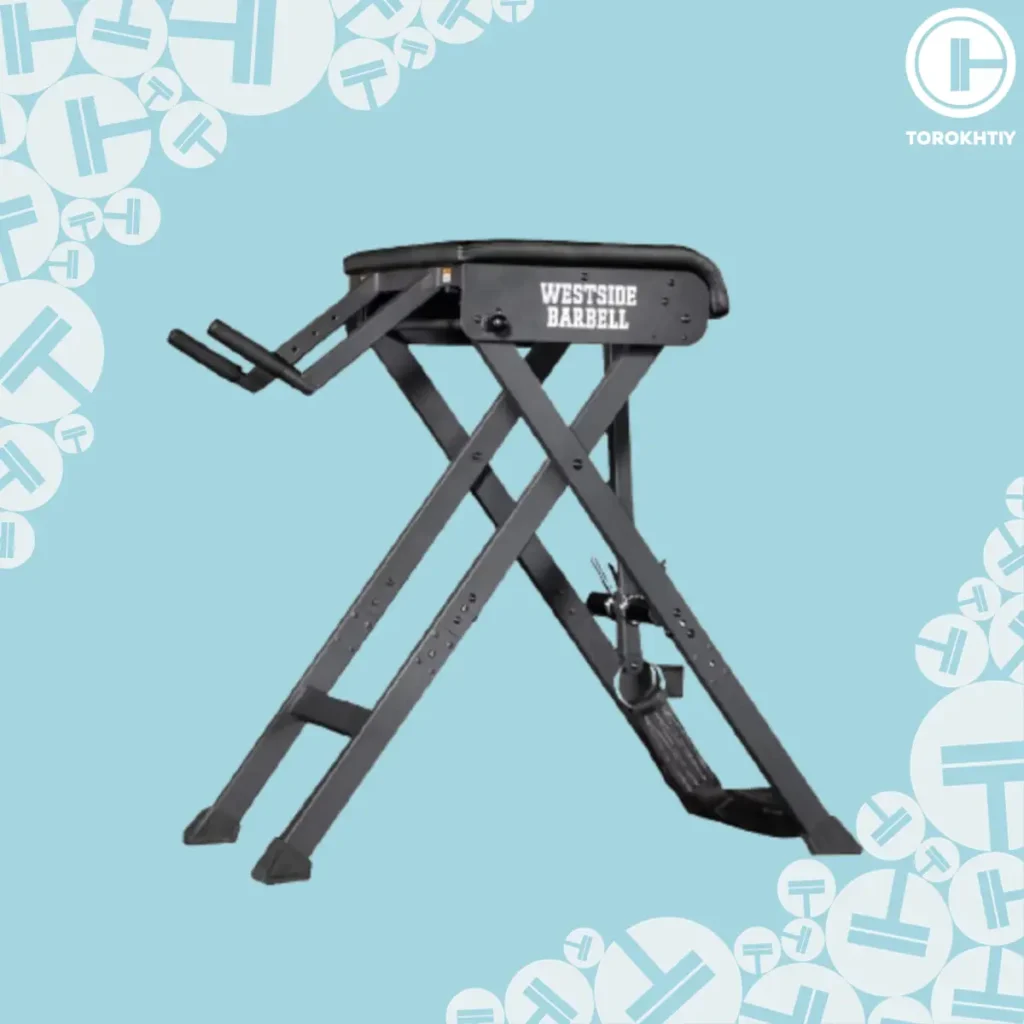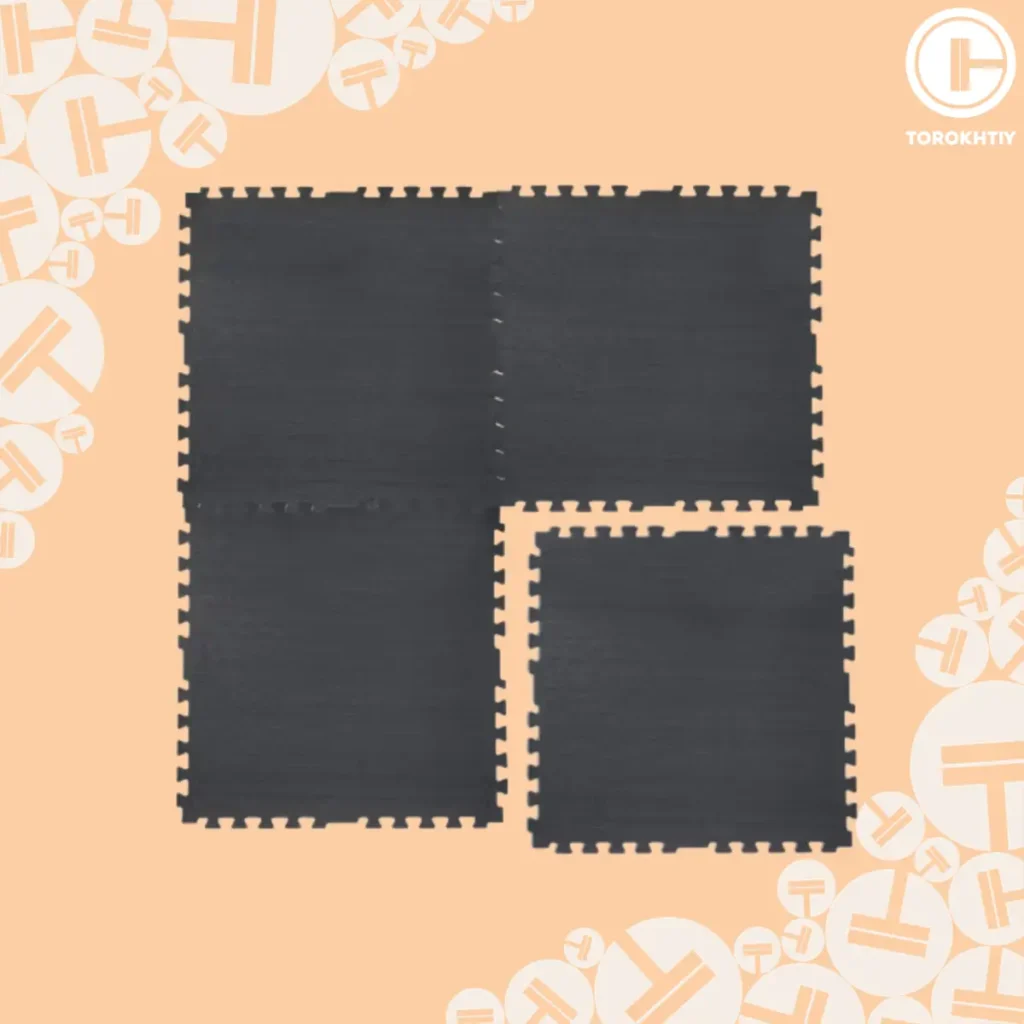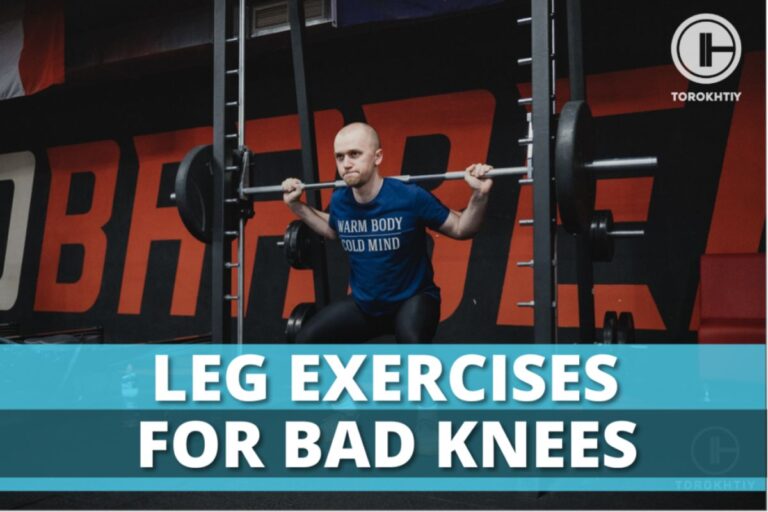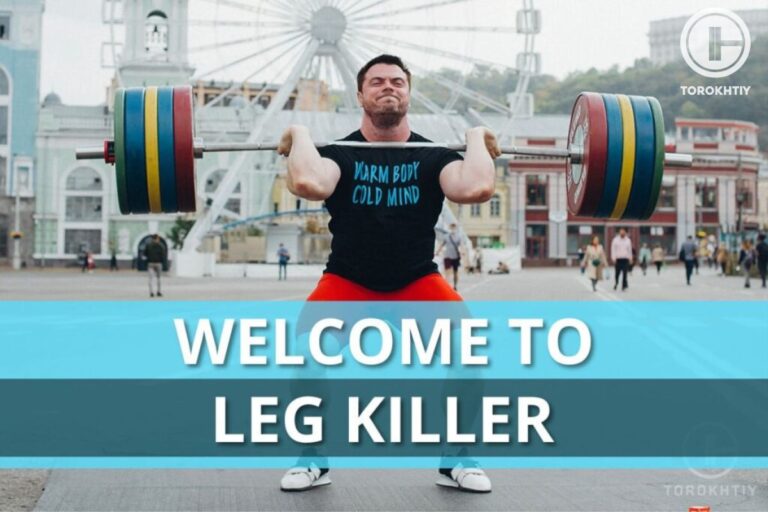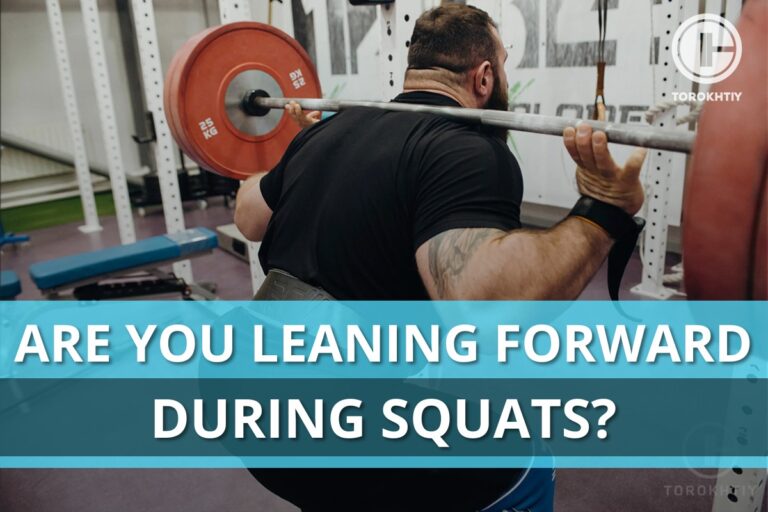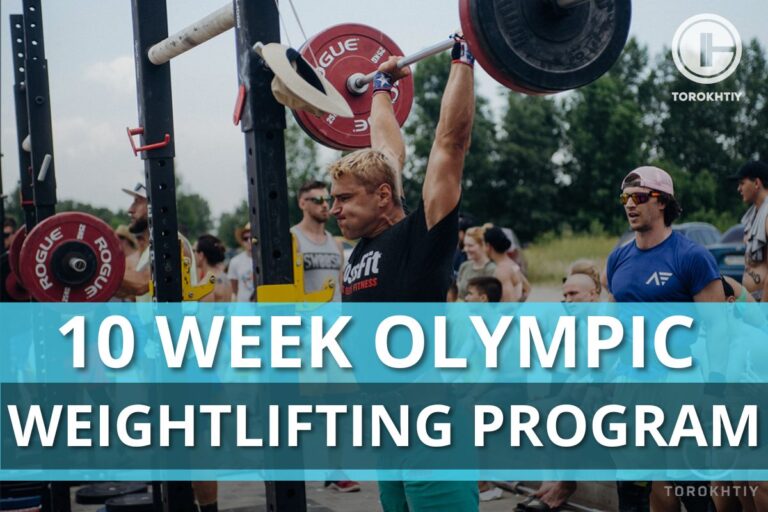How Much Does a Home Gym Cost in 2025?
Is that rash idea of building a home gym hovering in your mind again? Well, stick with it a bit longer. Contrary to popular belief, a personal workout space has the potential to relieve you physically, mentally, and financially over time.
How much does a home gym cost? It depends on several factors. We’ll find a reasonable range from market analyses and averages. Regardless, a fat meltdown with a debt pileup doesn’t look like a good equation.
It doesn’t have to be an extravagant project only well-to-do fitness freaks can undertake.
How much does a home gym cost? Multiple factors affect home gym cost, including the type of training and equipment required. However, the average cost of a home gym is $1000-$2000. According to our findings, a home gym pays off within five years, compared to a gym membership.
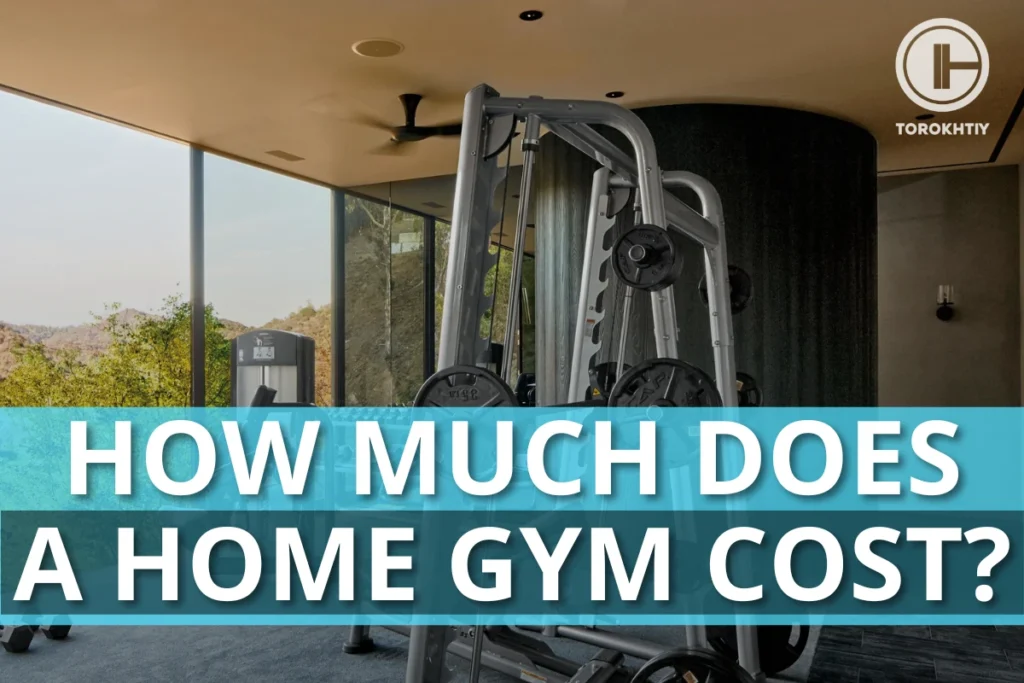
Reasons Why You Should Arrange a Home Gym
As per the Physical Activity Guidelines for Americans, adults need at least 150 minutes of aerobic exercise and two days of muscle-strengthening weekly exercise.
Regularly hitting a gym can be a hassle. From filling up your gas tank to mustering enough social energy, the stumbling blocks can pile up on the way. Still, there’s no guarantee you’ll get the equipment you need, whether due to the lack of club facilities or those muscled-up dudes curling and benching non-stop.
If you can manage some (not a lot of) immediate funds and space, a home gym will deliver you from such obstacles. It will enhance flexibility and freedom, thus helping you reach your fitness goals.
1. No Queues
Do you like hanging around the squat rack, looking for somebody’s last set, and sneaking in when possible? On the flip side, seeing a bunch of people frowning at you isn’t a good sight either. Your home gym is exclusive and free of waiting lines and pressure to be quick.
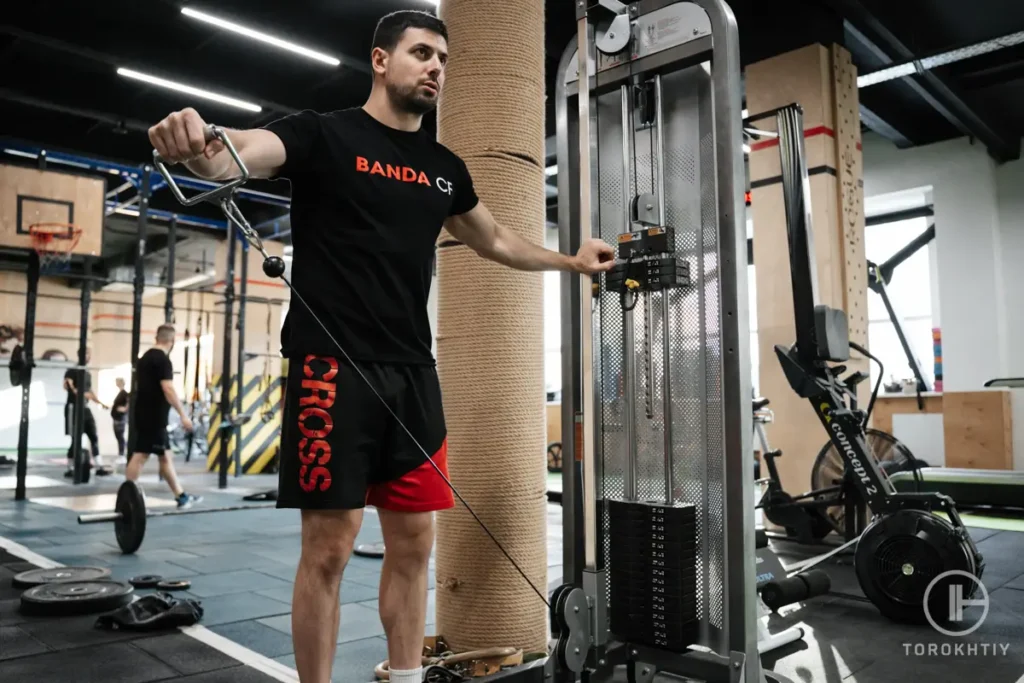
2. No Commute
A gigantic downside of choosing a commercial gym is the waste of time and energy. You have to drive the distance and deal with traffic…twice! Most people skip exercise simply to avoid the commute. Walking to your garage or basement is a lot easier.
3. No Downtime
Some important meetings can pop up just before your workout session. You can sweat it in a home gym anytime and as often as you want. It’s always accessible 24/7/365, no matter the holidays or weather conditions. Twice-a-day workouts are already getting popular.
4. No Judgments
Peer influence is not always positive. You may be revising your technique or recovering from an injury. Having colleagues around can push you to throw additional plates and maintain your reputation. There may be several reasons for wanting a private oasis.
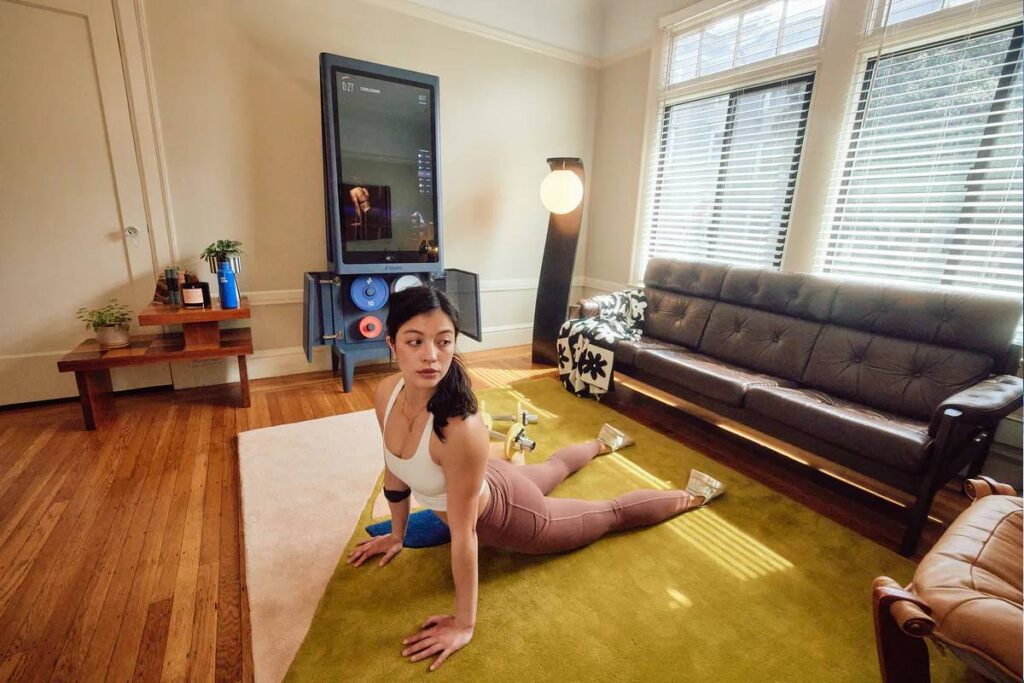
5. No Harassment
A home gym is a privacy as well as a safety solution. According to a survey, 56% of women experience harassment at gyms. Safe access to lockers and restrooms can be difficult.
6. No Daycare
After work and groceries, most parents struggle to make time for the gym. If you have a personal space, set up a small playpen to keep an eye on your little children. At the same time, encourage the older ones to be active together. This way, you’re on hand for your family and training.
7. Risk of Infections
Gyms are prone to poor ventilation, bacterial infections, and other health hazards, and higher traffic translates into an even higher risk. Not that your home gym will be 100% germ-free, but you know when that barbell was last cleaned. Being alone in your home gym can reduce the exposure and contact to viral diseases.
8. No Restrictions
The underrated benefit of owning a gym is that you make rules. Not feeling like putting weights away or cleaning that chalk dust? Do it tomorrow. Bring your friend without a guest pass. Blast your favorite music. Change the layout. More importantly – no gym membership fees!
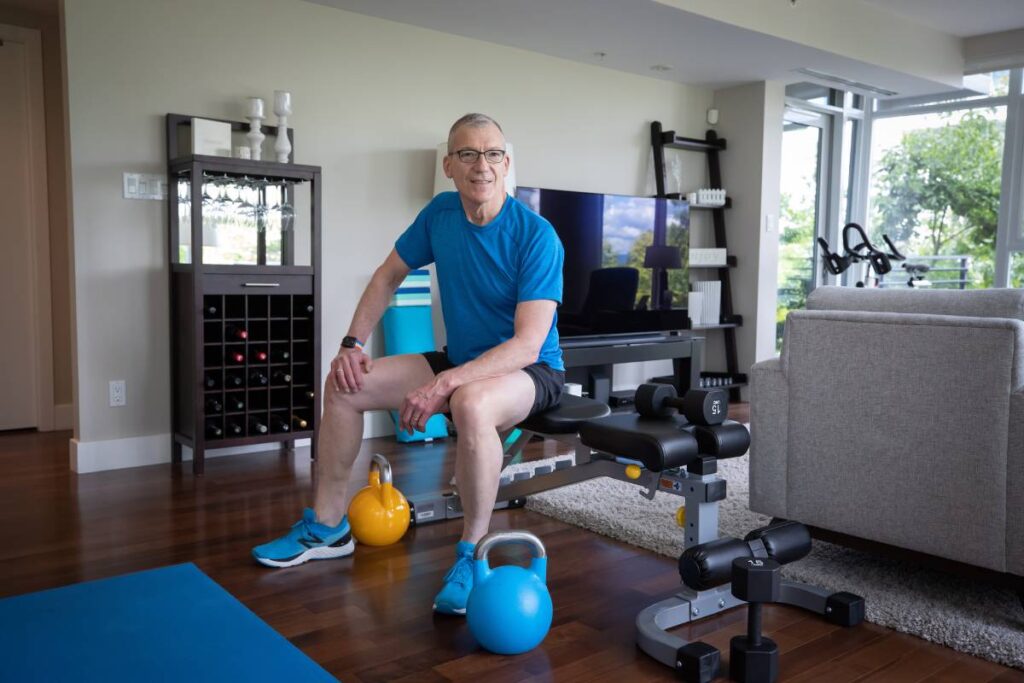
Factors Influencing the Cost of a Home Gym
How much does it cost to build a home gym? We’ve seen that a decent and diligent gym setup can initially cost you $1000-$2000. Individual spending can be less or a lot more than the average. The following factors determine the actual home gym cost at the end of the day. Figuring them out will help you make intelligent decisions and allocate a practical budget.
Tips From the Champ
Budgeting is the first step. Come up with design and layout requirements according to the available space. Then, assign each item fiscal value with contingencies, should unforeseen expenses arise.
Olympic Weightlifting Champion
1. Training Type
The primary purpose of a gym will dictate successive choices and expenses. Are you into yoga or cardio? You may be planning to nail your first weightlifting meet. Or doctors have advised physical activity to counter age-related health problems.
The list of must-haves will be rather short for a yoga or pilates gym. In comparison, strength training needs various tools, even at the minimum, including a barbell, weight plate set, and solid bench.
High-quality cardio machines (treadmills, bikes, rowers, etc.) also demand high funds and space to operate efficiently. However, they boast admirable lifespan and resale value.
2. Equipment Selection
There are different slabs of equipment concerning the price range. Yoga mats, jump ropes, medicine balls, and resistance bands cost little. Then come free weights, and at the top of the pyramid, you’ll have squat racks, workout stations, and cardio machines.
Companies offer in-home expert assembly for such hefty and sophisticated pieces at a surcharge. However, the quality and brand name differentiate the pricing of the same equipment. Most manufacturers have now introduced home gym-worthy lines, which are in price and performance than commercial-grade counterparts.
Since home gym equipment sees a limited number of people, getting commercial-grade build quality isn’t really needed. However, you may miss tech and connectivity features. What matters is you purchase durable gear with a reliable warranty.
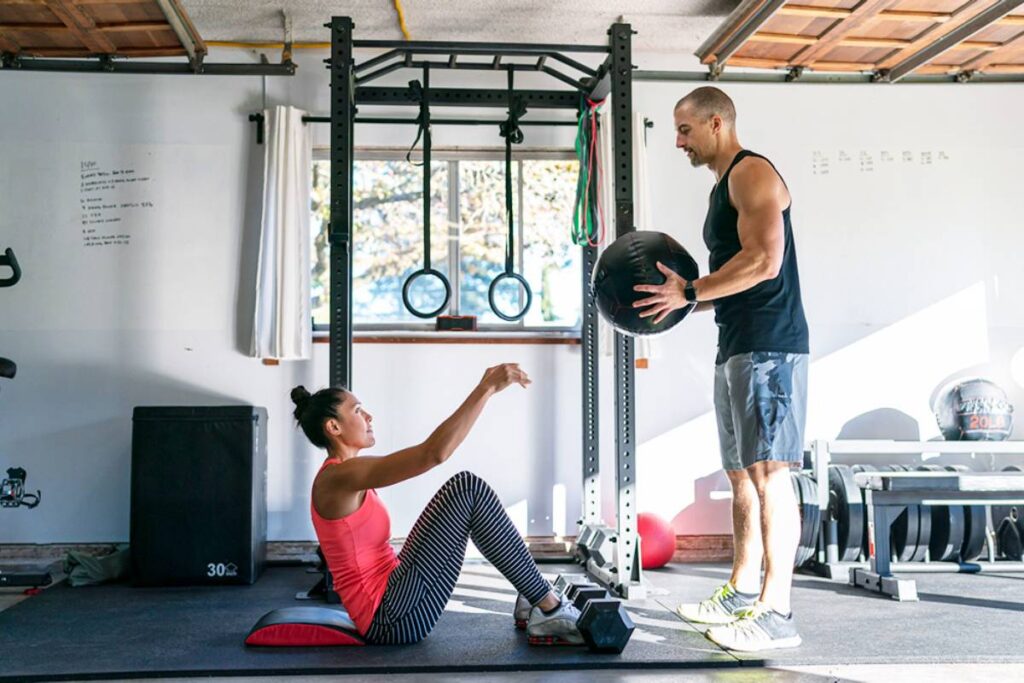
3. Gym Location
Although you can slip a foldable treadmill under your bed, a home gym should ideally have a dedicated space. Revamping your garage, basement, attic, or a large spare room works best.
If weather permits, exercising outdoors in your backyard or terrace can do the trick as well. Alternatively, you may employ dividers in the living room or build a structure from scratch.
Choosing and outfitting an appropriate space can add negligible or quite an enormous amount to your final home gym setup cost. It’s not only the location but also the layout, HVAC, lighting, and floor reinforcement that make a place usable.
4. Floor Plan
A strength-centered gym hosts bulky machines. Flooring becomes an essential component. The right type of floor surface sustains the load and disperses the energy. It keeps equipment stable.
Additionally, it can minimize accidental slips and twists. You have a few options. Homeowners are mostly confident with rubber tiles and rolls, setting back $5-$15 per square-foot coverage. Foam, vinyl, hardwood, and carpets are other options.
Check out the subfloor first. Subflooring is the solid and structural base underneath. It may also require repair or total replacement. HomeAdvisor estimates a cost of $428-$2981 to replace the subflooring, depending upon the room size and material choice.
“The cleaning method and frequency vary with flooring. Rubberized surfaces get easily wiped with a stiff brush, vacuum, and wet mops. Tiled floors are not much different. Remember, carpets need steam cleaning once or twice a year.”
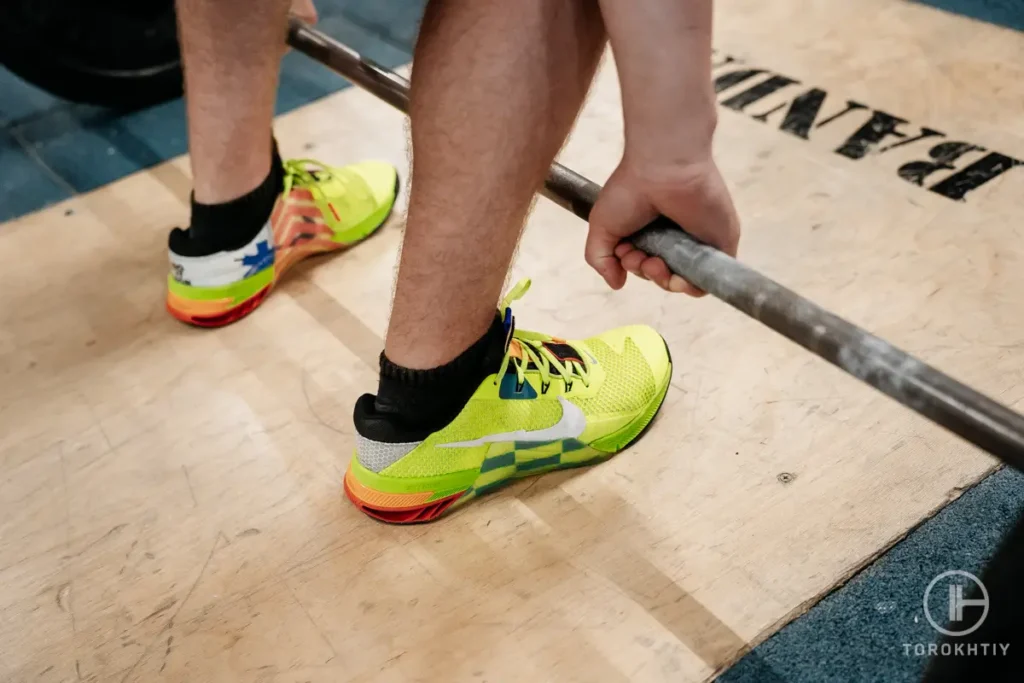
How Soon a Home Gym Would Be Paid Off?
In order to find out the timeframe required to recoup the home gym cost, we’ll have to look at the following averages:
- The average cost of a monthly gym membership ranges from $38 to $75, with New York being the most expensive state (Statista, July 2021).
- The analysis of the top 16 U.S. gym chains puts the average monthly cost at $37.71 with annual fee at $507 for the first year and $479 afterward. LifeTime Fitness, Goodlife Fitness, and Gold’s Gym are charging the highest amount (RunRepeat, Jan 2021).
- There is no hard and fast rule to determine the average cost of a home gym. Typically, you can get going at about $2000 in case of little to no construction and restoration.
“If a person decides to invest $2000 into a home gym, it’s approximately equal to 50 months of membership only at a commercial gym. Keep in mind, the cost of living is cheaper in the Midwest than coastal regions.”
| Year | Average Home Gym Cost | Average Gym Membership Cost |
| 1 | $2000 | $507 |
| 2 | $0 | $479 |
| 3 | $0 | $479 |
| 4 | $0 | $479 |
| 5 | $0 | $479 |
| Total Cost | $2000 | $2423 |
The table shows that a good home gym is easily paid off in under five years without factoring in any annual charges, inflation rate (3% YoY), transportation cost, and other miscellaneous purchases associated with outdoor errands.
Some facilities offer exorbitant plans for personal training and nutrition guidelines. Additionally, a private workout place can replace other family members’ gym memberships, recovering the invested amount much earlier.
Some equipment will also be a lifetime investment when you will take care of them properly.
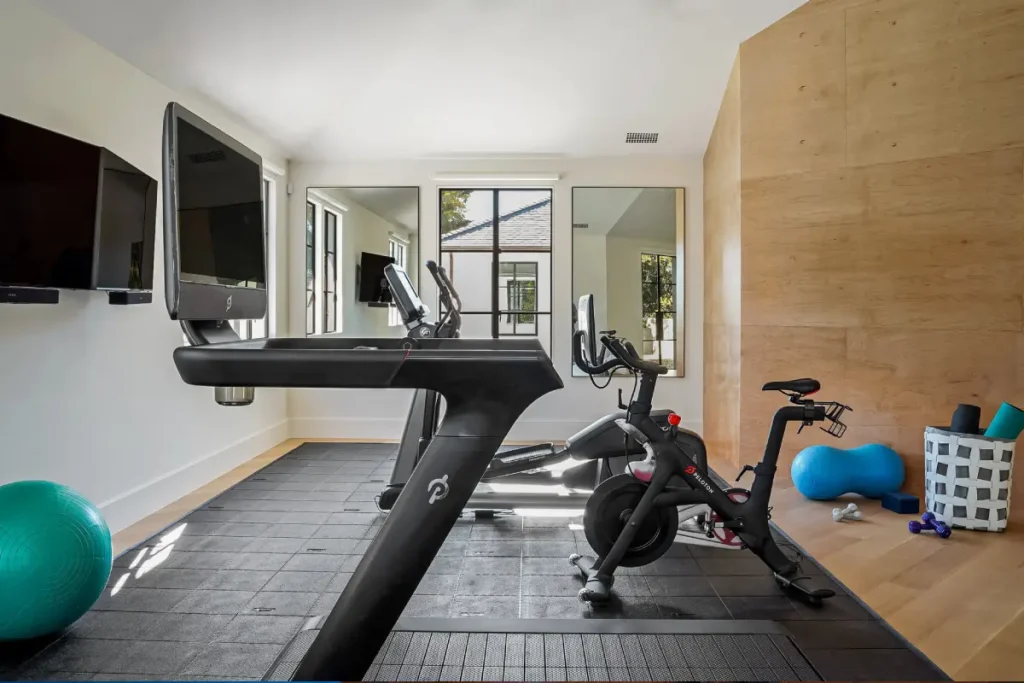
Building a Home Gym vs Buying a Gym Membership
There are two straightforward ways to get fit: go to a commercial gym or build one in your house. Although we encourage people to build garage gyms, there may be a few situations where membership signup makes more sense. We’ve compiled each option’s pros and cons to help you with this blue pill, red pill conundrum.
| A Home Gym | A Commercial Gym |
| Better use of your time and resourcesCustomizable environmentPrivacy and flexibilityNo ongoing monthly expenses | Unique facilities (pool, sauna, etc.)Much more equipment and exercise optionsSocial interaction and relationshipsEasy to move out of your place |
| The initial investment can be too muchNo trainer and spotter to assist you with exercises | Tough to terminate contractsNo privacy and a lot of waiting around for equipment when it’s crowded |
Pros and Cons of Building a Home Gym
Positives:
Could be better:
Pros and Cons of Buying a Gym Membership
Positives:
Could be better:
How to Save Money Building a Home Gym?
Top-of-the-line products can be extremely pricey. If you can afford them, go on! Invite us to the all-new, wall-to-wall gym in your 3-car garage whenever ready! Those looking to create a humble fitness abode on a budget will benefit from the following tips.
Tips From the Champ
Marketing is everywhere, from small logos on your attire to the largest billboards on roadblocks. Everyone is trying to sell you their stuff. Don’t take their words for granted. Be smarter! Trust independent reviewers.
Olympic Weightlifting Champion
1. Buy Used Equipment
Buying pre-owned equipment is a viable cost-saving measure. As the pandemic kicked in, many people built home gyms – some more extravagantly than others! With public spaces and studios reopening, a lot of high-quality accessories and apparel are up for sale. You can snap up fantastic items cheaply, drastically reducing the final home gym price.
You can browse for second-hand equipment on Craigslist, eBay, and Facebook Marketplace. Make sure there is no major damage. If in-person inspection isn’t possible, seeing photos will give an idea. Lastly, obtain the serial number of the electronics and consult the manufacturer to know parts availability and service history.
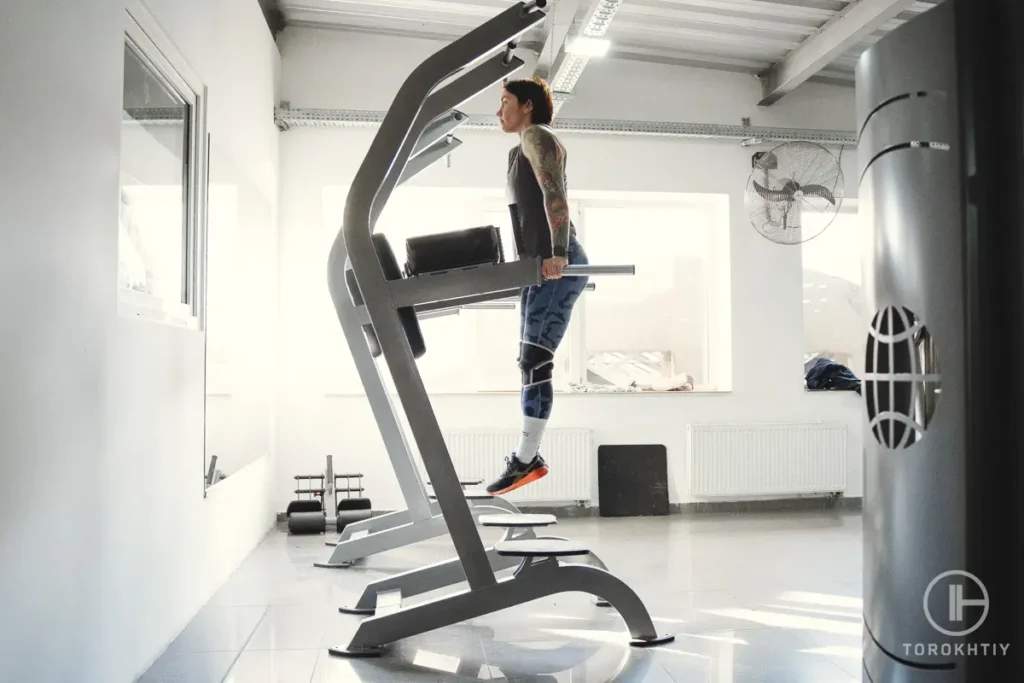
2. Hunt for Deals and Discounts
Is buying used gear that has already tasted sweat for months or years doesn’t excite you? There are some ways to ensure you’re getting maximum value on new products. First, wait for sales and deals on selected items.
Secondly, most sellers set a minimum requirement to qualify for free shipping promotions. Lastly, see if you can apply for zero-interest financing to spread the cost over a long period.
Rogue Fitness is a popular mid-priced, high-quality brand for made-in-USA equipment. REP Fitness is another economic name in the industry. It’s worth checking out Amazon for your preferred brand’s products. Retail giants often succeed in obtaining bulk quantities and pricing them for less.
3. Consider Multi-Functional Tools
Buying a tool that serves more than one purpose saves cost and valuable floor space. Don’t make a chest fly or leg press machine your priority. Instead, a cable machine is versatile, working your legs, arms, back, and chest. However, it can be expensive.
Bringing a suspension (TRX) trainer or a pulley system are cheaper alternatives. Adding landmines, aka core plates, boosts the possibility of drills and angles with barbell workouts. Medicine balls, kettlebells, and resistance bands are go-to options for a home gym that lacks weight room classics. Adjustable dumbbells are the most frequent example of multi-purpose implements.
You should be extremely careful in this case. PowerBlocks can replace an entire rack of dumbbells. If you’re not planning to stock up on dozens of dumbbell sets, get three or four fixed variants.
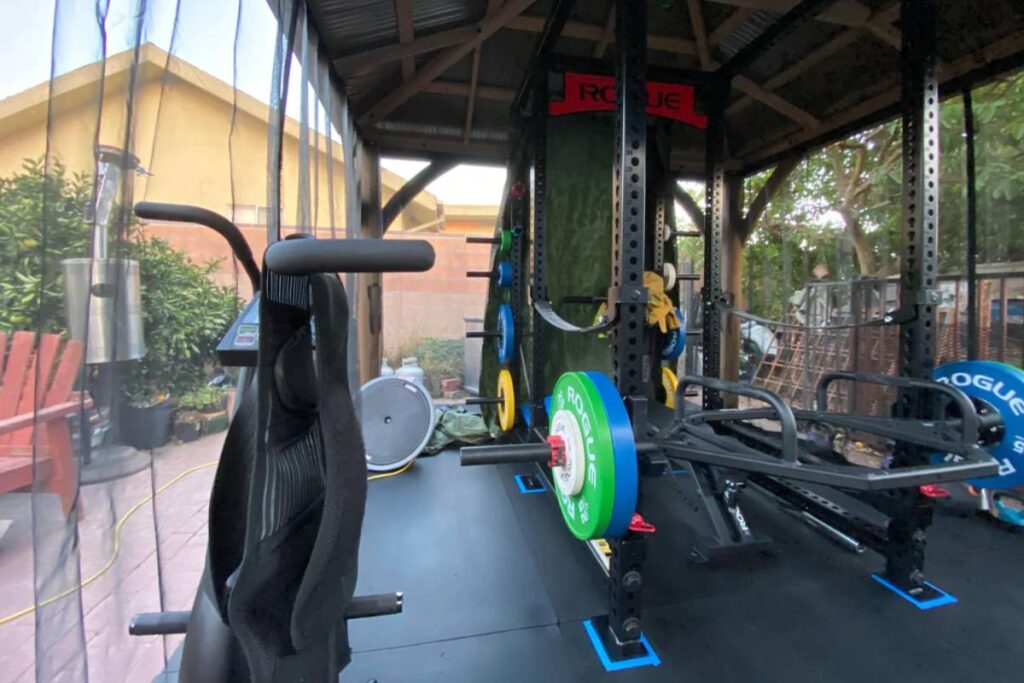
4. Grow Step by Step
Building a garage gym is a process involving multiple steps and phases. Start small with essentials. These might be just a yoga mat with a couple of bands and steppers or a barbell and a weight plate set. This way, you’ll collect only mandatory things and avoid overspending.
You can also go DIY. Things lying around your house – like a chair, cinder block, duffel bag, PVC pipes, and wood pieces – can be repurposed into simple tools. You’ll find unending blogs and tutorials about it. Regarding space and layout calculation, tap into your creative interior designer.
Tips From the Champ
The surface you’re running on is another great thing about it because it’s low impact. This means that it’s nice to your hips, knees, and ankles and it’s good to use even if you have issues with your joints. The belt is 45’’ in length when wrapped around the running surface. It’s also 17.5’’ wide – which is plenty.
Olympic Weightlifting Champion
Store-bought items pass rigorous safety and quality tests, which homemade tools can’t match. We prohibit building things that go overhead or sustain the entire body weight, such as weights, racks, and benches.
Equipment You Need to Build a Home Gym
If you’ve decided to give this “building a home gym” idea a go, the next part is to shortlist the equipment. Your checklist should reflect your specific fitness level and goals. However, the following recommendations will work for most home gyms. Research suggests everyone should do four types of exercise: aerobic, muscle-strengthening, stretching, and balance.
A gym needs three components:
- An obstruction-free space to train,
- A form of external resistance,
- An indoor cardio and conditioning device.
Equipment We Recommend Buying for Your Home Gym
ROGUE Echo Bar 2.0
- Material: Bare Steel
- Weight: 44.1lb(20kg)
- Length: 86.75’’(220.3cm)
- Diameter: 1.1’’(28.5mm)
- Shaft Length: 53.95’’(137cm)
- Knurling: Medium depth diamond knurling
- Knurl Marks: Dual knurl marks + single-ring marks in between for extra guidance(Olympic knurl), no center knurl
- Weight Limit: 1000 lb
- Sleeve Length: 16.4’’(41.7cm)
- Finish Type: Bright Zinc coating
- Best multi-purpose barbell
- Top-notch quality at a sub-$300 price tag
- One-year warranty on Echo bars
The all-new Rogue Echo Bar is the best Olympic barbell for home gyms. Its 28.5mm diameter, 16.4” sleeves, 45lb weight, and no center knurl make it perfect for a variety of movements.
The standard amount of spin and whip is experienced when lifting. However, it contains only IWF knurl marks. The 190K PSI tensile strength steel neither breaks nor bends under heavy load. A bright zinc finish avoids corrosion as well.
ROGUE R-3W Fold Back Wall Mount Rack
- Height: 90.4″
- Width: 56.2″ (Overall), 49″ Outside Uprights, 43″ Inside Uprights
- Depth: Two Choices: 24.75″, 43.75″
- Working Area: 24.75/43.75 x 56.2″
- Footprint: 24.8″ or 44″ x 56.2″ (On wall)
- Rackable Capacity: 1000 lbs
- Product Weight: 163 lbs-190 lbs
- Material: 3×3″ 11-Gauge Steel, 5/8″ SAE Grade 5 Bolt Hardware
- Finish: Black Powder Coat
- Number of Racks: 1
- An all-in-one retractable power rack setup
- Robust built;
- Lifetime warranty
- Optional stringers to prevent damage to drywall
The wall-mounted rack is a valuable addition. Attachments include a pull-up bar, j-cups, detent pins, and mounting brackets. R-3W comes in two depths: 24” or 44” from the wall. When folded inward at the end of the session, it won’t take up more than 5″ of space.
Despite its retractable design, it is rock solid due to heavy-duty 2×3” 11-gauge steel. Do your squats and other exercises in a safe cage, no matter how much floor space is available.
- 10-45lb plates, available in pairs and sets
- 12000 drops durability testing
- Free shipping and a 30-day money-back guarantee
Bumpers are a better choice than clunky iron discs. REP Fitness bumper plates won’t shoot up your home gym setup cost. They carry a neat black finish and raised white lettering. Made with extreme precision, only 1% weight tolerance is allowed.
The odor and bounce are kept to a minimum. All pates have the standard 17.7” width and 2” hole; thickness varies with weight. Steel inserts resist any kind of damage when the bar is dropped.
- Over 30 different weights
- Ergonomically designed grip and heads
- Free shipping and a 30-day money-back guarantee
Ergo Hex dumbbells stand at the pinnacle of artistry. Hexagonal-shaped heads aren’t only attractive but practical. They don’t roll away. Plus, its premium rubber coating sustains bumps and drops without extending the impact to dumbbells or the floor.
It’s free of intolerable odor and noise. The bulged handles with center knurling provide a secure grip. There are 2.5-125 lb weight categories, having 2.5lb increments up to 30 lb and 5 lb jumps afterward.
REP AB-3100 Adjustable Weight Bench
- Adjustability: 6 back pad adjustments, 3 seat angle options
- Folding: no
- Material: 14- and 4-gauge steel
- Color palette: metallic black, matte black, red, blue
- Item weight: 70 lb
- Weight limit: 700 lb
- Product dimensions: 50.5” L x 23” W x 16.75” H
- Transport wheels: 1 pair of wheels available
- Additional features: not available
- One of the most affordable adjustable benches
- 70lb item weight, 700lb load capacity
- Available in four colors: red, blue, black, gray
It features a quick and secure ladder-style adjustment. The back pad can be locked at six angles, including a 90⁰ upright for military presses. The seat pad also allows three adjustments.
There are no declines, though. An adjustable weight bench unlocks infinite workout opportunities. AB-3100 checks off all quality boxes at a cheaper price.
REP FT-3000 Compact Functional Trainer 2.0
- Item dimensions: 34” L x 52” W (front)/ 23” W (rear) x 78” H
- Item weight: 770 lb
- Weight stack: 187 lb (each stack)
- Max resistance weight: 93.5 lb
- Footprint: 34″ X 52″
- Cable travel length: 76.3”
- Warranty: Limited lifetime warranty
- Additional features: 21 cable positions, 2 D-handles, storage pegs, placard
- Min/Max usable weight per side: 10-90 lb
- Positions & Cable Range: 21
- Compact, lightweight, and inexpensive for a functional trainer
- Black powder coat and chrome finish
- Comes partially assembled with a lifetime warranty
A functional trainer is an advanced equipment combining weight stacks, pull-up bars, pulley systems, and cable attachments for full-body explosive workouts. FT-3000 is quite compact at 78″ high and 52″ wide, which can be brought inside a typical doorway.
Extra-tall athletes may face a restricted ROM. The maximum effective weight is 90 lbs. You’ll hardly find a cable machine of this quality at a cheaper price.
Rowers are super-effective, low-impact cardio machines – working up to 85% of muscles. A half-hour session can burn up to 440 calories, depending on your weight and workout intensity, and none is more tried-and-tested than the legendary Concept2 RowErg.
It has a 54” slide rail for full extension of arms and legs. The flywheel maintains resistance proportionate to your effort. It’s unbelievable regarding price, performance, display, and durability.
ROGUE Westside Scout Hyper
- Color: Black
- Made In USA: No
- Product Weight: 94.5 LB
- Length: 38″ (depth – including arms, unfolded)
- Width: 27.5″ (pad) / 32″ (including pop pins)
- Height: 46.5″ (top of pad, unfolded)
- Foot Print: 60″ x 27.5″ (unfolded – at feet) 8” x 27.5″ (folded – at feet)
- Other: Product Specs Includes (1) Hyper Strap and (1) set Spring Collars
- Reverse-hyper machine for rehab and conditioning
- Foldable and lightweight design
- Includes collars and straps; optional handle extension kit
Louie Simmons invented reverse hyper when he injured his spine. Doing reverse hyperextensions helps with stretching and strengthening lower back, hips, glutes, and hamstrings.
A recent study found higher activation in posterior chain muscles with reverse hyper than traditional Roman chairs. Two 5.25″ sleeves at Scout Hyper can take up to 80kg iron or bumper plates. It’s made affordable and portable with hinging legs, folding the unit into mere 13”.
- Fitting them together is easy and quick
- Thick tiles to absorb shock and impacts
- Free shipping and money-back guarantee
These rubber tiles are a go-to reinforcement for gym floors. They bring traction, stability, mobility, slip resistance, and long-term resilience better than alternative home gym flooring options.
Additionally, you don’t have to break the bank. Each Rep rubber tile measures 24”x24”, weighs 8lb, and costs less than $10 per square foot. They have puzzle borders to simplify interlocking and adjust the coverage as needed.
FAQ
Is It Cheaper to Go to a Gym or Make a Home Gym?
A home gym requires an average upfront investment of $1000-$2000. A local club’s membership fee for the first year may be a lot less unless you join some exuberant cross-training program. However, home setups have little ongoing fixed expenses. Thus, going to a gym will be more expensive than building one in your house in the long term – let’s say, five years!
Do You Think a Home Gym Is a Good Idea?
Building a home gym is the best idea. It provides comfort and convenience to exercisers, taking away long queues, travel, excuses, and crowds. You can exercise on your schedule and pace. These things enhance workout productivity and opportunity. Cost-efficiency is a mere spinoff.
How Big of a Building Do I Need for a Home Gym?
Any space can be retouched into a home gym. A 150-200 square-ft area with 8-10 ft overhead clearance will do fine for tucking a cardio machine, power rack, and other necessary equipment. We advise checking out foldable and multi-functional pieces if you’re low on space.
What Are the Disadvantages of a Home Gym?
When tailored to your requirements, a home gym doesn’t have many disadvantages. However, you can miss a personal trainer or spotter when doing a movement for the first time. Similarly, having gym bros around serves as a motivation and support factor – but who said you can’t train with your friends in your garage.
Conclusion
So, how much does a home gym cost? It can range from a couple hundred to thousands of dollars, depending on how you set it up. However, the average cost of a home gym falls around $2000.
Almost everyone understands the benefits of a private workout space. Whether the investment is worth it can become a contention point. The one-off spending can look like a lot, but it surely starts paying off in a few years.
Are you planning to build or spruce up a home gym of your own? What’s your takeaway from this article? We’ll look forward to your suggestions and queries in the comment section.
Also read:
- Best Functional Trainer
- Best Compact Home Gym
- Home Gym vs Gym Membership
- Best Weight Lifting Equipment
- Best Grip Strengthener
Reference:
- Victor Amorim Andrade-Souza, Thaysa Ghiarone, Andre Sansonio, Kleiton Augusto Santos Silva, Fabiano Tomazini, Lucyana Arcoverde, Jackson Fyfe, Enrico Perri, Nicholas Saner, Jujiao Kuang, Romulo Bertuzzi, Carol Gois Leandro, David John Bishop, Adriano Eduardo Lima-Silva, “Exercise Twice-a-Day Potentiates Markers of Mitochondrial Biogenesis in Men,” The FASEB Journal 34, no. 1 (2021): 1602-1619.
- Alexandro Andrade, Fábio Hech Dominski, Marcelo Luiz Pereira, Carla Maria de Liz, Giorgio Buonanno, “Infection Risk in Gyms during Physical Exercise,” Environ Sci Pollut Res Int 25, no. 20 (2018): 19675-19686.
- Michał Krzysztofik ,Michał Wilk, Grzegorz Wojdała, and Artur Gołaś, “Maximizing Muscle Hypertrophy: A Systematic Review of Advanced Resistance Training Techniques and Methods,” Int. J. Environ. Res. Public Health 16, no. 24 (2019): 4897.
- J. B. Unger, C. A. Johnson, “Social Relationships and Physical Activity in Health Club Members,” Am J Health Promot 9, no. 5 (1995): 340-3.
- Matthew Cuthbert, Nicholas J. Ripley, Timothy J. Suchomel, Robert Alejo, John J. McMahon, Paul Comfort, “Electromyographical Differences Between the Hyperextension and Reverse-Hyperextension,” J Strength Cond Res 35, no. 6 (2021): 1477-1483.
Why Trust Us?
With over 20 years in Olympic Weightlifting, our team does its best to provide the audience with ultimate support and meet the needs and requirements of advanced athletes and professional lifters, as well as people who strive to open new opportunities and develop their physical capabilities with us.
By trusting the recommendations of our certified experts in coaching, nutrition, dietology, and sports training programming, as well as scientific consultants, and physiotherapists, we provide you with thorough, well-considered, and scientifically proven content. All the information given in the articles concerning workout programming, separate exercises, and athletic performance, in general, is based on verified data. We ensure that you can rely on our professionals’ pieces of advice and recommendations that can be treated as personalized ones which will benefit you and fully meet your needs.
The product testing process is described in more detail here
Author: Ihor Shymechko
Pro Olympic Weightlifter, Coach
Best Results: Snatch – 208 kg,
C&J – 240 kg
Ihor has been a professional weightlifter since 1996, boasting over two decades of competition experience. His notable achievements include clinching the European Championship in 2009 and securing a silver medal in the 105kg division at the Senior World Championships in 2011. Ihor represented his country in the 2008, 2012, and 2016 Summer Olympics. After retiring from competitive weightlifting, he transitioned to coaching, leveraging his vast experience to guide athletes who now compete on both national and international stages.


